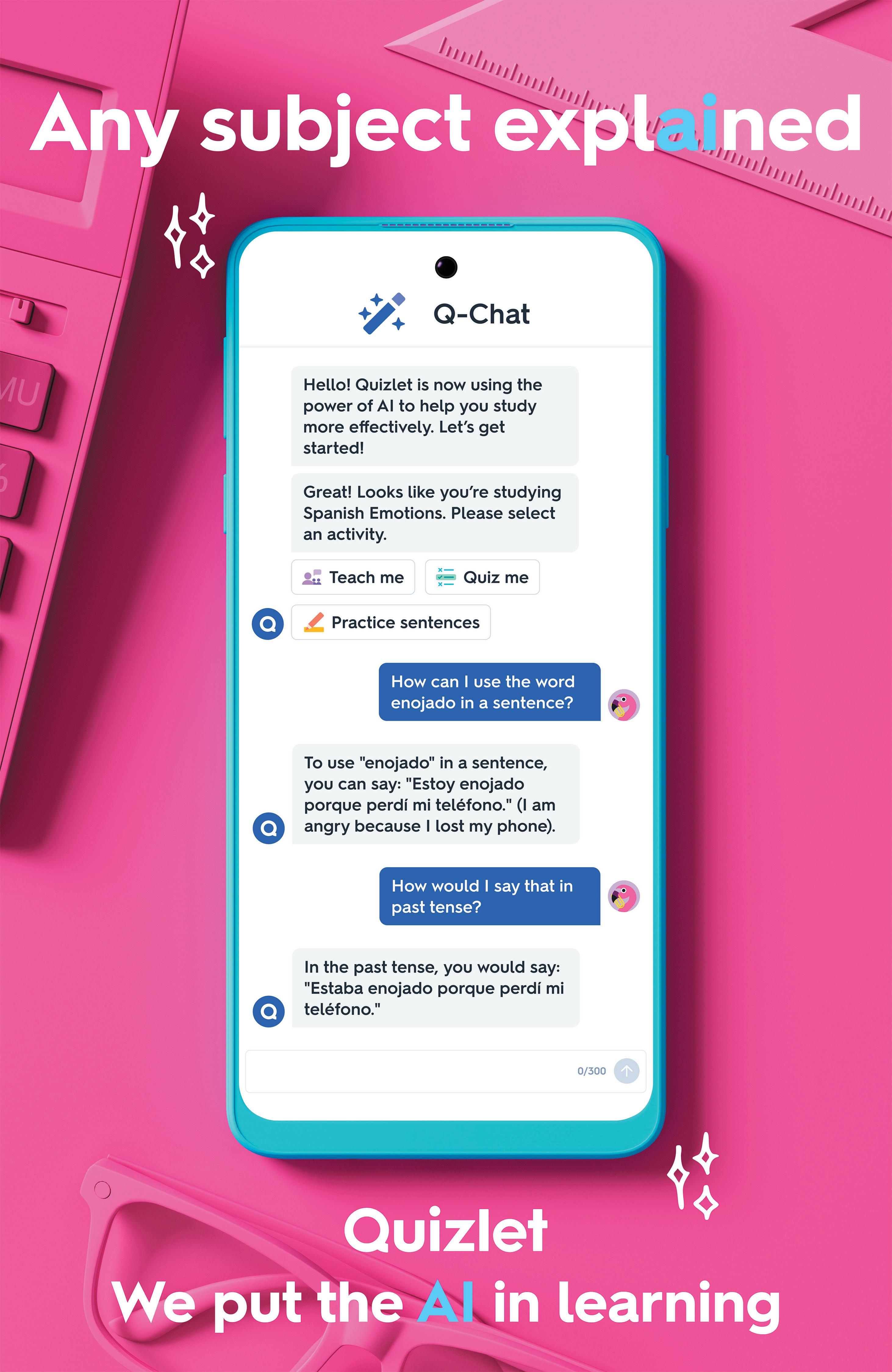SEPTEMBER 26 - OCTOBER 9, 2023
FEATURES PAGE 04
What does fraternity and sorority life look like at UAA?

SPORTS PAGE 06


SEPTEMBER 26 - OCTOBER 9, 2023
FEATURES PAGE 04
What does fraternity and sorority life look like at UAA?

SPORTS PAGE 06

Parking Services says that what started as a temporary discount became a complicated system for both students and Parking Services.
By Taylor Heckart new3@thenorthernlight.org
Students returning to the residential campus this semester may have experienced an unexpected change when buying a parking permit – they had to buy the full-price, normal parking pass for $157.50 a semester instead of the $75 residential pass.
Residential passes used to let students park anywhere on campus, including in the residential parking lots. Residential passes had their own specific images differentiating them from other passes, meaning cars in the residential parking lots without a residential parking pass would receive citations.
Now, normal parking permits work at residential lots, and there is no longer a residential parking pass. Parking Services says it’s because the reduced-price pass was never meant to be permanent, and they can no longer afford to cover the cost.
Resident Assistant Willow Kristeller said that many of her residents have already asked about the change.
Kristeller said that RAs
weren’t told about the new fee increase until their training at the beginning of the semester, nor were they given an explanation for the change.
Kristeller said she wishes that Parking Services had warned residential students about the change ahead of time.
“If they had told us at the beginning of the summer or the end of the spring semester, like, ‘this change will enact this year,’ we could have had time to make more money throughout the summer or work more hours, whatever we needed to do to make that money to cover that permit.”
In an interview with The Northern Light, Parking Services Associate Director Falon Harkins said that when it comes to communication with students about pass changes, Parking Services can try to be better. He said that Parking Services’ communication is limited, though, as they don’t have the ability to send mass emails to students.
Harkins said that in order to understand the pass changes, it’s important to understand how Parking
Services works.
Harkins said that Parking Services receives no general funds from the university. Most of the money that goes to Parking Services comes from student fees paid to UAA, citations and parking passes. He said the majority of their money comes from parking passes – most of which are bought by students.
The money that students pay to parking services goes toward many services, including snow removal, free jumpstarts, free bus transit, vehicle unlocks, and trail maintenance. The money also goes toward paying off the East Parking garage behind the ConocoPhillips Integrated Science building.
Harkins said that prior to 2016, residential students had to buy a normal parking pass and a special residential pass.
Harkins said that after conducting a review, Parking Services found that the process was too complex. Students would frequently get confused, and Parking Services had to write a lot of citations.
The decision was even-
tually made to combine those two permits into one parking pass. Harkins said that Parking Services decided to offer the residential pass at a discounted rate.
Harkins said that the discounted rate was only meant to be for a short period of time. Harkins said that the discount could only last for as long as Parking Services could “absorb the revenue.”
Harkins said, “It’s super important, I think, for people to understand and for me to convey that I don’t have the ability to give one thing away for free. I can only shift cost from one group of students or to another group of students.”
In a follow up email with The Northern Light, Harkins wrote that Parking Services is currently selling fewer passes, but lots still remain the same size. “We are reducing costs in many areas to avoid raising permit prices as long as possible and as much as possible,” wrote Harkins.
Harkins also said that implementing the combined residential parking passes was a complicated
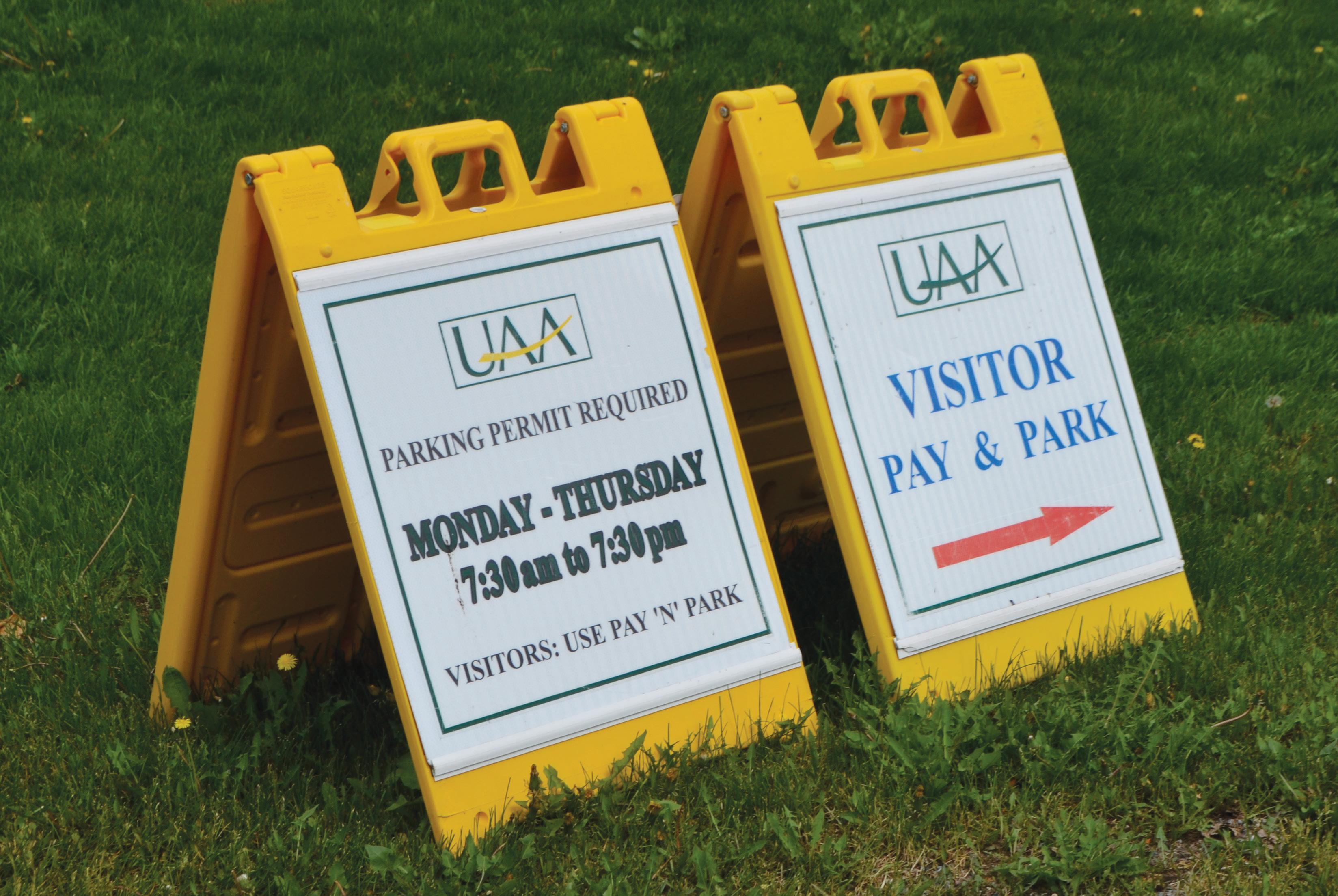
process.
“I know it doesn’t appear to be [a heavy lift], but we have to constantly update a list about who’s living in housing, who’s not,” said Harkins.
When people signed up for housing early then dropped, or decided to live on campus after buying a permit, the process became intensive, he said.
Additionally, Harkins said that students continued to receive citations when visiting friends on campus, signaling to Parking Services that the permit process needed to change.
For now, all students will be using the same pass, regardless of whether or not they live on campus.
But if enrollment rises, said Harkins, then UAA may have to come up with
a solution to protect parking space for residents.
In his email, Harkins clarified that if parking space for residents needs to be protected, that does not necessarily mean they’ll return to the old system.
“Technology might allow us to implement a different system than before. However certainly parking pressure in housing lots is a concern and we keep a close eye on it. If it gets to a point that we fear residents could be displaced we would implement a way of tracking resident vehicles and making sure we reduce that parking pressure,” wrote Harkins.
Harkins says that if students have questions, they can directly contact Parking Services for answers.
The AI chatbot will be released in late September and will learn from student questions that help connect them to relevant UAA pages.
By Hannah Dillon opinion2@thenorthernlight.org
UAA Enrollment Services Center is partnering with IvyQuantum – an AI chatbot service – to create an AI chatbot that will assist students in navigating all of UAA’s web pages.
The personalized UAA chat bot is named Spirit, after the university’s mascot, and is represented by an avatar of Spirit that welcomes everyone to the Seawolf Nation.
Possibly the biggest reason to implement a chat AI is the fact that “last
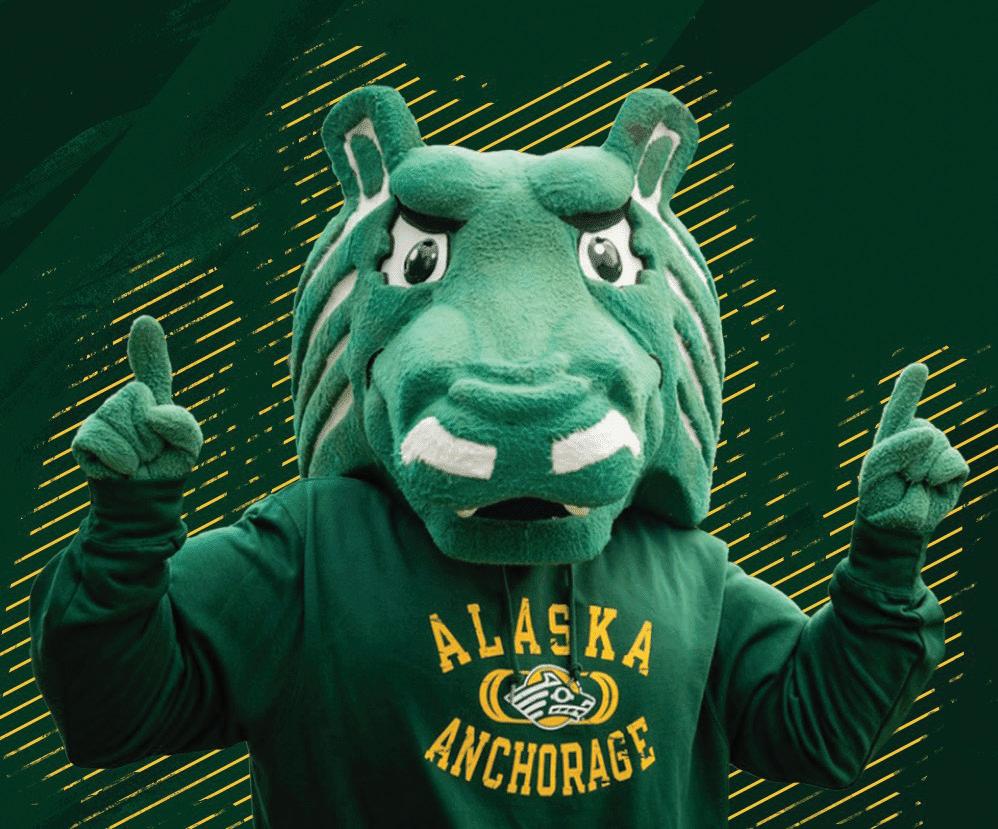
year, for the academic year ‘23, we had 25,868 phone calls. That’s only during open hours,” said UAA Student Experience Coordinator Eileen Moring.
Spirit will be able to reduce these numbers and assist students in a more timely and convenient manner.
Moring is the project manager who oversaw the addition of AI into the Enrollment Services’ webpages. She has been working with the chat AI team for the last two months helping to produce concise responses from Spirit.
Navigating UAA’s webpages can feel overwhelming at times, but Spirit can direct students to specific pages where answers to their questions can be more easily found.
“All of the information is on the website but sometimes students, staff, faculty and community members sometimes can get overwhelmed with all of the different options. So I see this as a helpful tool in the navigation of our website,” said Moring.
Clicking the chat box to speak with Spirit will produce “hot buttons.” These buttons are questions that Enrollment Services sees most often from students and are links to further the conversation with Spirit. If your question is not in the hot buttons list, you can simply type it instead.
When chatting with Spirit, students will be able to give feedback about the conversation with a thumbs up or a thumbs down. If given a thumbs down, Spirit will

ask the student to ask the question again or submit a ticket.
“The tickets will go to our different offices so that a staff member can reach out to them and work through it in person. We know that there’s limitations with chat AI, especially because there are so many ways to ask the same question. We still want students to feel supported,” said Moring.
The ticket also gets sent to the individual department where a student’s question originated. “We have different bots for different areas. So when you look at the chatbot for Admissions, it’ll go to the individual department. If for some reason a student is asking a Military Veteran Student Services question to the [Admissions] chat-
bot, Admissions will be able to give that to Military Veteran Student Services,” said Moring. Initiating conversation with Spirit will go to Moring’s admin portal, where she can view individual conversations Spirit had. She is then able to edit Spirit’s responses so future conversations are more accurate.
“The next time that question is asked, it gives either a more concise answer or, if it’s ambiguous, we start teaching the bot how to sort through all of the ways people ask things. It learns,” said Moring.
The chatbot will be released sometime late September to ensure the AI provides quality responses.
The new bleachers are a step toward modernizing the sports complex and are fully funded by Avis Alaska.
By Kyle Ivacic news2@thenorthernlight.org
Bleacher renovations are underway at UAA’s Avis Alaska Sports Complex. The new bleachers will feature better comfort with back rests and be up to ADA accessibility standards.
In an interview with The Northern Light, sports complex director Julie Weber explained that the changes are necessary to a growing sports program – especially due to an increase in sports complex use by students and community members.
According to Weber, sports complex attendance on the first day of school was up by 40 people compared to last year. This boost is in line with increased enrollment numbers, and the university’s push to bring students and staff back to campus following the COVID-19 pandemic.
Weber said that the money for the updated bleachers came from “a private donation by [Avis Alaska]” and that “it didn’t come from budget, it didn’t come from student fees, it didn’t come from
anything like that.”
Avis Alaska recently received the naming rights to the sports complex following a $1 million grant it provided to the university. Weber said that this grant is what made funding the new bleachers a possibility.
Weber said that construction was intended to be done “prior to school [starting].” However, construction ran behind schedule. Construction began on Sept. 12 and is expected to be completed on Sept. 22 – one day before Seawolf Hockey’s first scrimmage of the season.
With the added safety and accessibility of the new bleachers – including better handrails and wider aisles – comes a cost in the form of space. “We ended up losing almost 100 seats [in the main seating area],” said Weber. To help make up for this, the roof of the sports complex’s Olympic weight room is being upgraded to accommodate 45 seats above it.
“What they decided to do is … remove the ceiling of [of the Olympic weight room] and they’re going to put a cement,
weight-bearing [roof] … what’s now the ceiling is now going to become the roof and the ceiling,” said Weber.
These bleacher updates will not, however, be able to fully address the seating demands that existed in the previous season.
Weber said that the hockey team was once part of the Western Collegiate Hockey Association. The team competed at the Sullivan Arena where crowds attended games by the thousands.
However, Weber ex-
plained that the hockey program experienced funding issues that led to it being cut from the school’s budget in 2020. UAA then notified the Western Collegiate Hockey Association that the school would be leaving the league.
Save Seawolf Hockey – a fundraising campaign that formed after the hockey team was cut – successfully raised enough funds to allow the hockey program to restart for the 2022 to 2023 season.
Weber said that games have not been played in the
Sullivan Arena because it was used as an emergency homeless shelter during the pandemic.
Instead, the season was played at the university’s sports complex – with the perk of not being subject to the Sullivan Arena’s usage fee.
Weber said that Seawolf Hockey is not able to reenter the hockey Western Collegiate Hockey Association because of the association’s rules on the number of seats that must be available for spectators.
Simply put, the sports
complex – even after the ongoing renovations –does not have enough seating to meet the capacity requirements for WCHA membership.
Overall, Weber and others are excited about the possibilities that wouldn’t be available without grant money and increased attendance on campus. “The upgrade in the bleachers will look nice, they’ll look professional … they’ll be gold and green,” said Weber. “It’s just going to get bigger and better.”
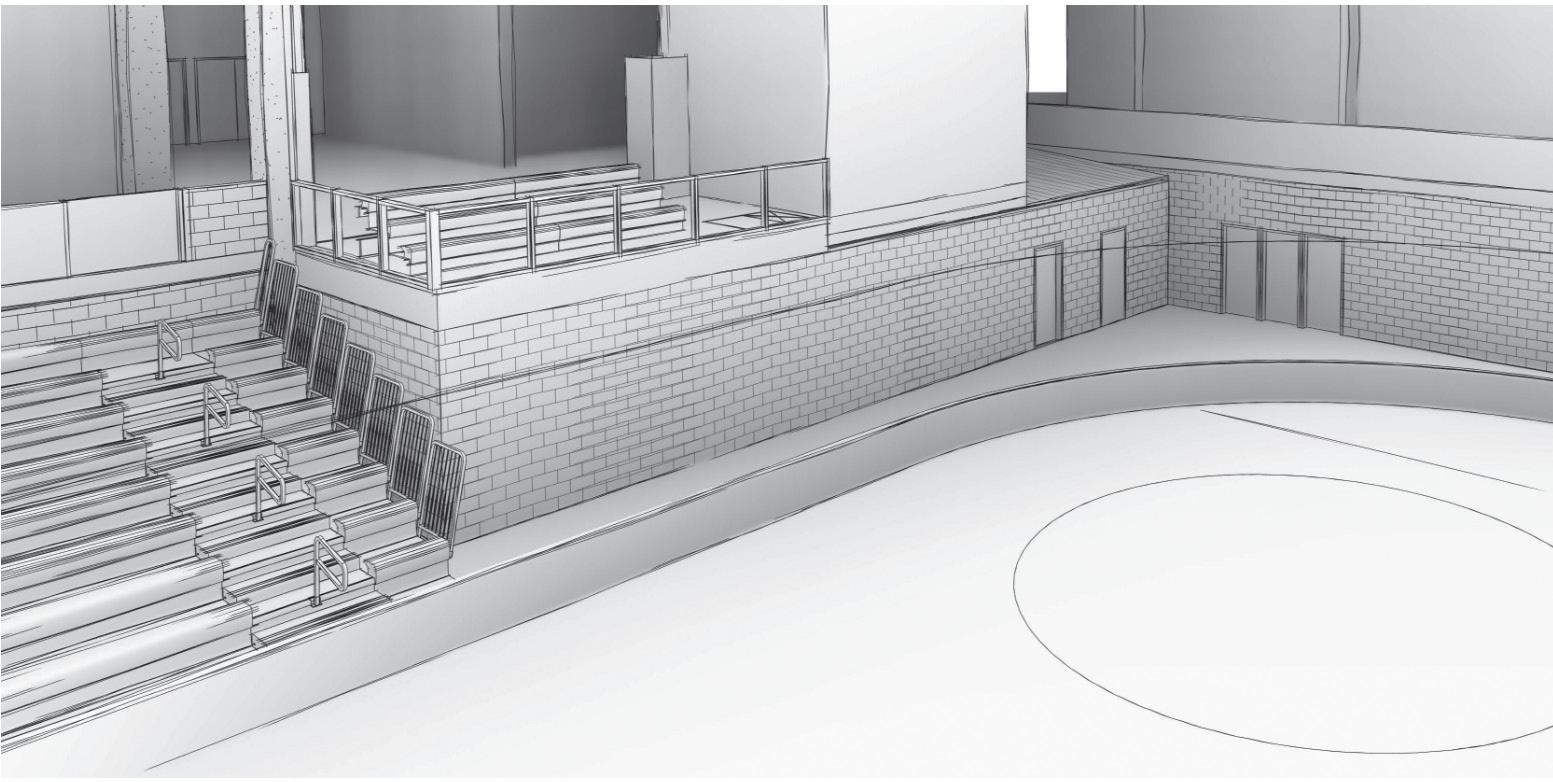

With more than ten topics to choose from, this year’s ECHO calendar offers knowledge and interaction for patients, caregivers and professionals.
By Kaycee Davis features2@thenorthernlight.org
Project ECHO, which stands for Extension for Community Healthcare Outcomes, is presented by the UAA Center for Human Development. The virtual learning ECHO meetings have resumed for the 2023-24 cycle.
ECHO was developed in New Mexico by Dr. Sanjeev Arora who had a patient – a widow with two children – with severe hepatitis C. The patient arrived at his clinic one day, eight years after her initial diagnosis. She had delayed treatment because she couldn’t take time off work to travel 5 hours from her rural home to get treatment in Albuquerque.
If the doctor in her town had known how to treat her, she could have received life-saving care close to home. As it was, she had waited too long and didn’t survive. Dr. Arora said in a Project Echo video that, “The
right medical knowledge and expertise in the right hands at the right time could save millions of lives around the world.”
What started out as Arora sharing his protocol with other primary care physicians turned into an online knowledge sharing community. ECHO’s website explains that they “learn from experts and each other, where they could discuss real-life case examples that offered insight on New Mexico’s unique patients and systems. In one year, these clinicians became experts in the treatment of hepatitis C – the first success story of the global organization now known as ‘Project ECHO.’”
The Northern Light was present for the September ECHO events, both part of the Family Echo, which is designed to “increase knowledge and skills for parents & guardians who are raising and supporting young children and young adults
(between birth and 26 years old) with behavioral and health-related diagnoses, trauma history, IDD, and related neurodevelopmental disabilities.” Field professionals, parents and guardians have been in attendance. Family ECHOs occur on the second and fourth Wednesdays of each month.
There are more than ten other topics to choose from. The third week of each month is the busiest, with presentations on School Health, Home Visiting, Alaska Vaccine, and Perinatal Care.
In an email to The Northern Light, Project ECHO Director Jessica Harvill wrote that the staff is working to finalize the topics for 2023 through 2024 and that they are “working with Catholic Social Services on a new Refugee Mental Health ECHO that will launch in 2023.”
ECHO in Alaska is based out of UAA’s Center for Human Development
which has been hosting ECHOs since 2017. Harvill wrote in her email that ECHO works with
the UAA community as many within the community “serve as presenters, or subject matter ex-
perts,” and they reach out to “spread the word about upcoming ECHO series.”

School of Engineering clubs had an evening to demonstrate fun and interesting science – showing UAA and the community at large what they do.
By Kaycee Davis
features2@thenorthernlight.org
The College of Engineering Student Club Showcase was held on Sept. 15 in the Engineering and Industry Building. The event was hosted by the UAA College of Engineering and was open to friends of engineering students, current UAA students, staff, faculty and alumni.
This is the College of Engineering’s second time hosting the Student Clubs Showcase. The first time being at the start of Spring Semester in 2023. Dr. Jennifer McFerran Brock, Associate Dean for Academics in the College of Engineering, said that they are considering whether they will do this once a year or every semester.
The showcase is an opportunity for clubs to show up and be seen. Clubs
put on demonstrations in multiple spaces inside the building. Pizza and salad from Moose’s Tooth Pizza were served in the reception area on the second floor. It was an event for all ages.
The Survey Club showed how ancient Egyptians plotted out the dimensions for the pyramids. They used thumb bobs and toe-to-foot methods of measurement, and estimated 10 inch lengths. The method was highly accurate.
In the Fluid Mechanics Lab, the Society of Civil Engineers, event-goers got to get wet while making boats. It was noisy with water turbines and the joyful chatter of participants as they folded and decorated boats, ran up the stairs on one end of the water tanks and ran down the length to the other end to see whose boat was fastest. Off to the side was
a ‘graveyard’ of the boats that had already raced.
The Computer Science Club demonstrated their artificial intelligence coffee bot that will be able to take an order and make coffee by itself. They didn’t have a prototype up yet, but club members were knowledgeable and happy to share their plans.
The Society of Women Engineers showed the thermodynamic properties of salt and ice. Guests were given a zip bag and were directed to a table that had cream, sugar and vanilla. They zipped it shut, double-bagged it and were handed a can with ice and salt inside, into which they put the zipped bags and sealed the can shut. They then shook the bags. And shook. And shook. It was a lesson in exothermics, where the salt lowered the melting point of the ice to below freezing. The ice molecules released
energy and the movement froze the mixture in the bag, and then guests could eat their experiment.
Student Veterans of America President Joshua Nagy hosted an Alaskan trivia game. Participants used their phones to log on to a website and play with about 15 other people in a fun, noisy game. There was plenty of laughter at the multiple choice guesses, and there was a list of who was in first through fifth place throughout the game, which made it more competitive.
The clubs worked hard on making their projects interactive and fun, and engagement with students, faculty and community members was strong. It was a great evening for people to meet students and professors and learn about College of Engineering clubs.
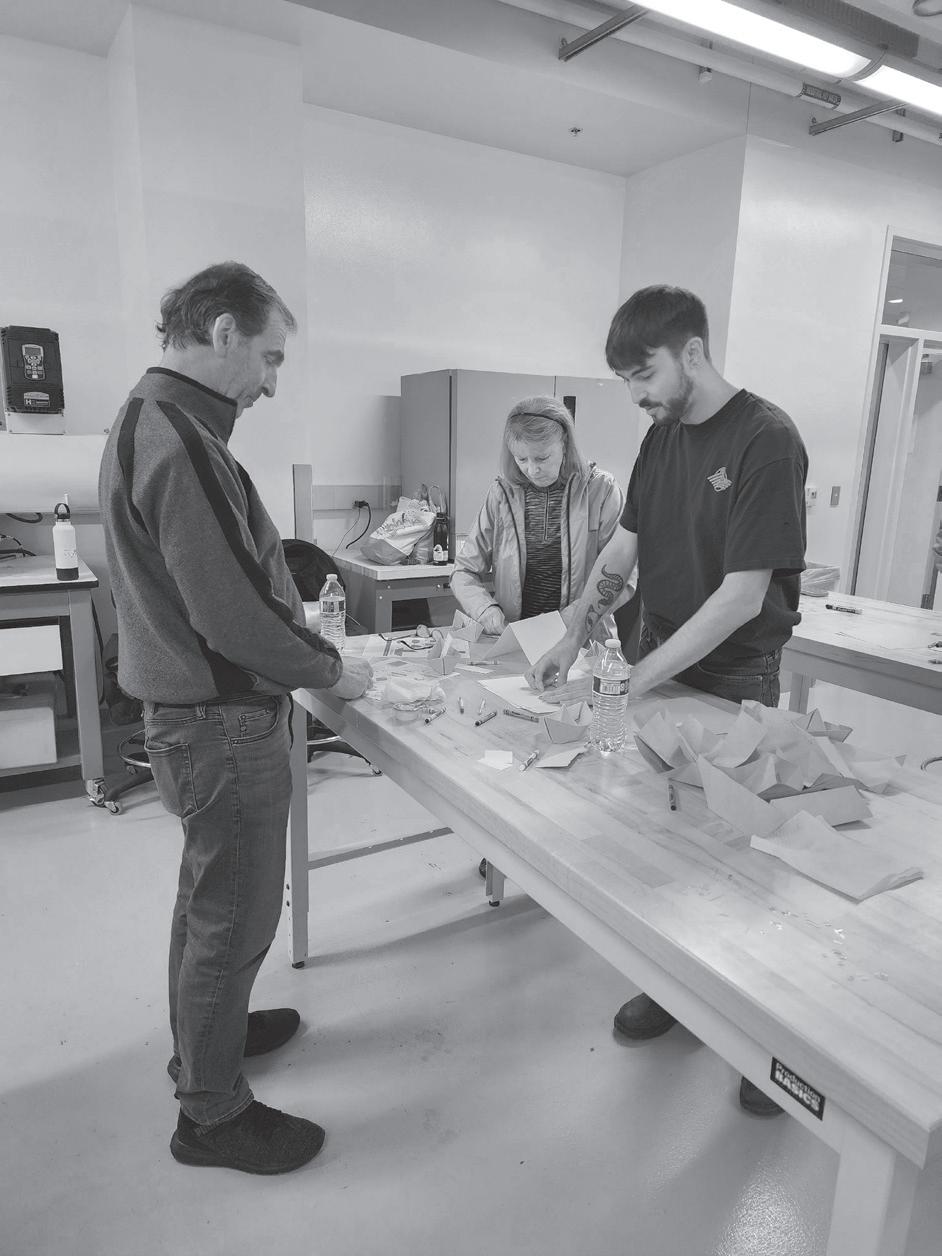

Rush Week, the period of time when Greek Life seeks out new members, has recently ended at UAA, adding new members to sororities and fraternities.
By Taylor Heckart new3@thenorthernlight.org
Greek life at UAA is, in many ways, different from colleges in the Lower 48. UAA’s fraternities and sororities are much smaller than their Lower 48 counterparts, which bring unique opportunities and challenges.
UAA’s two sororities, Sigma Sigma Sigma and Alpha Sigma Alpha, were founded in 1997 and 2004 respectively. Meanwhile, the two fraternities, Tau Kappa Epsilon and Alpha Sigma Phi are much newer: founded in 2015 and 2018. UAA used to have one more fraternity, Delta Chi, which UAA lost within the last year.
Alpha Sigma Alpha President Hannah Bissett said that when it comes to sorority recruitment, the National Panhellenic Conference places a 40 member cap on sorority membership. However, since UAA’s enrollment numbers are much smaller, sororities at UAA have a lower self-imposed cap that is adjusted based on the size of the largest sorority.
Tau Kappa Epsilon President Steven Hobbs said that the rush process is different for fraternities. He said that, unlike sororities, UAA’s fraternities don’t have caps on how many students they can admit.
This year, fraternity and sorority visibility was significantly impacted when UAA’s annual Campus Kickoff was canceled due to weather conditions.
Bissett said that having no Campus Kickoff “was definitely heartbreaking because it was the 20th anniversary of Campus Kickoff, and it’s also our 20th anniversary being on campus.”
Hobbs also said that not having a campus kickoff this year was hard for recruitment.
“Recruitment for us is entirely word of mouth, almost,” said Hobbs, “That’s why Campus Kickoff is so helpful for us … because we get face time with so many people in such a short amount of time.”
Despite the Campus Kickoff cancellation, Bissett said that Alpha Sigma Alpha has seven new members this semester, pushing their membership up to 15.
Hobbs said that Tau Kappa Epsilon will have three to six new members this year, in addition to their eight active members.
UAA’s sororities and fraternities don’t have houses in the way that many of their Lower 48 counterparts do. Hobbs said that the lack of a common space is challenging when Tau Kappa Epsilon is looking for somewhere to meet.
Sororities and fraternities operate in many different spheres. Each has their own “philanthropies,” which are groups they partner with to do volunteer work. They also offer networking and leadership opportunities specific to chapter members.
Bissett said that when it comes to being a member of Alpha Sigma Alpha, “you get out what you put in.”
“I’ve just been really heavily … pushing the idea [that] it’s important for you to grow as a leader, and that’s what ASA is supposed to be – at least in my opinion. It’s supposed to be something that you take as a tool to do other things.”
For Hobbs, the draw of being in a fraternity is the community. “It’s guys that I will be friends with for the rest of my life. The guys you meet here will … be your best men at your wedding and carry your casket at your funeral.”
There are costs associated with being part of a fraternity or sorority, which vary from group to group.
Alpha Sigma Alpha’s dues are $425 a semester, driven in part, said Bissett, because their national organization has increased how much they charge per member.
Tau Kappa Epsilon’s dues are roughly $300 a semester, which Hobbs said is on the lower end of what fraternities charge.
UAA’s fraternity and sorority life also defies some common “greek life” stereotypes.
Bissett said that the members of sororities on campus don’t fit the stereotypical idea of what a sorority girl is. “A lot of girls are really down-to-earth and they just want to do service, and giving, and they want to be there for their communities.”
Student Organization Coordinator
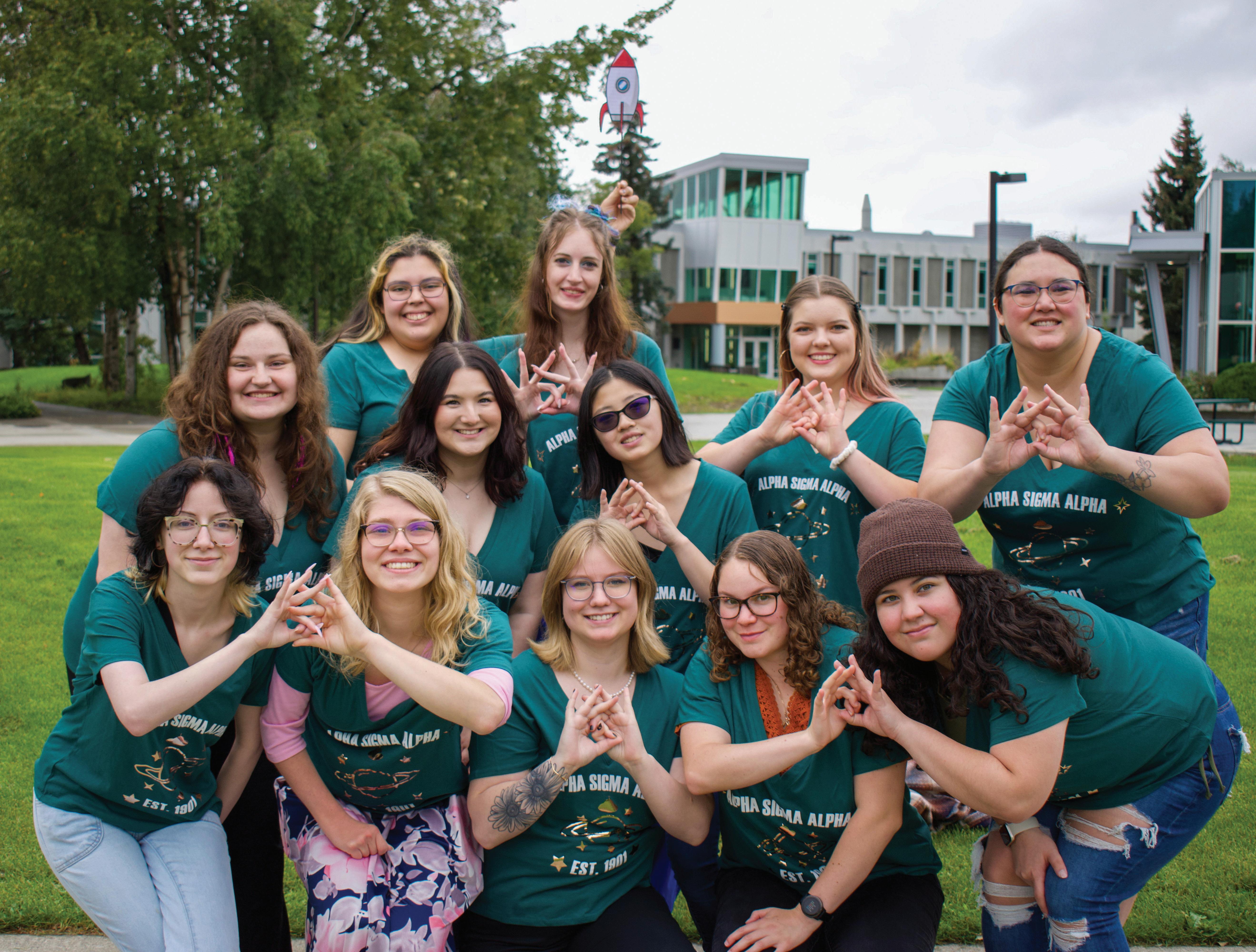
Shelby Kriegh said that it’s important to acknowledge the stereotypes that exist around sororities and fraternities, especially around drug and alcohol abuse, and there’s a reason why the media may portray them that way.
“But luckily here on our campus, I can say this having worked with like, many, many, many campuses, it is actually so different here. And I think one reason why is because the community is so small, they’re able to be … much more tight knit.”
Kriegh said that in her time at UAA, she has barely had to interact with the UAA conduct team, because behavior tied to drugs or alcohol isn’t common.
Kriegh said that there used to be a third fraternity, Delta Chi, but they hadn’t met the membership numbers required by their parent organization. Their organization recently made the decision to remove the chapter from UAA.
Kriegh said that losing Delta Chi was due, in large part, to low membership during Covid. During and after the pandemic, it was hard to get students en-
gaged with campus groups.
Kriegh said that this is an issue across UAA. “I think that’s something that we’re seeing, not just with fraternity and sorority life, but with all of our student organizations, is student engagement looks so different in this … somewhat post pandemic, post quarantine era that we’re in right now.”
With higher enrollment at satellite campuses and more remote classes, Kriegh said that it can be hard to engage with students and get them interested in joining groups like fraternities and sororities.
Kriegh, Bissett and Hobbs all say that they hope to see more growth and engagement with UAA’s fraternities and sororities in the future.
Though rush is over, fraternities and sororities are encouraged to participate in continuous open bidding, where students can bid to join year-round. Student Organization Services has a Fraternity and Sorority Life interest form which can be found online.
The Student Union entrance has been painted with UAA’s Seawolf spirit colors, green and gold.
By Hannah Dillon opinion2@thenorthernlight.org
The Student Union’s newly painted entrance gives a warm welcome to all who enter.
Student Experience Coordinator Eileen Moring was a major contributor in initiating the painting of the walls and pillars.
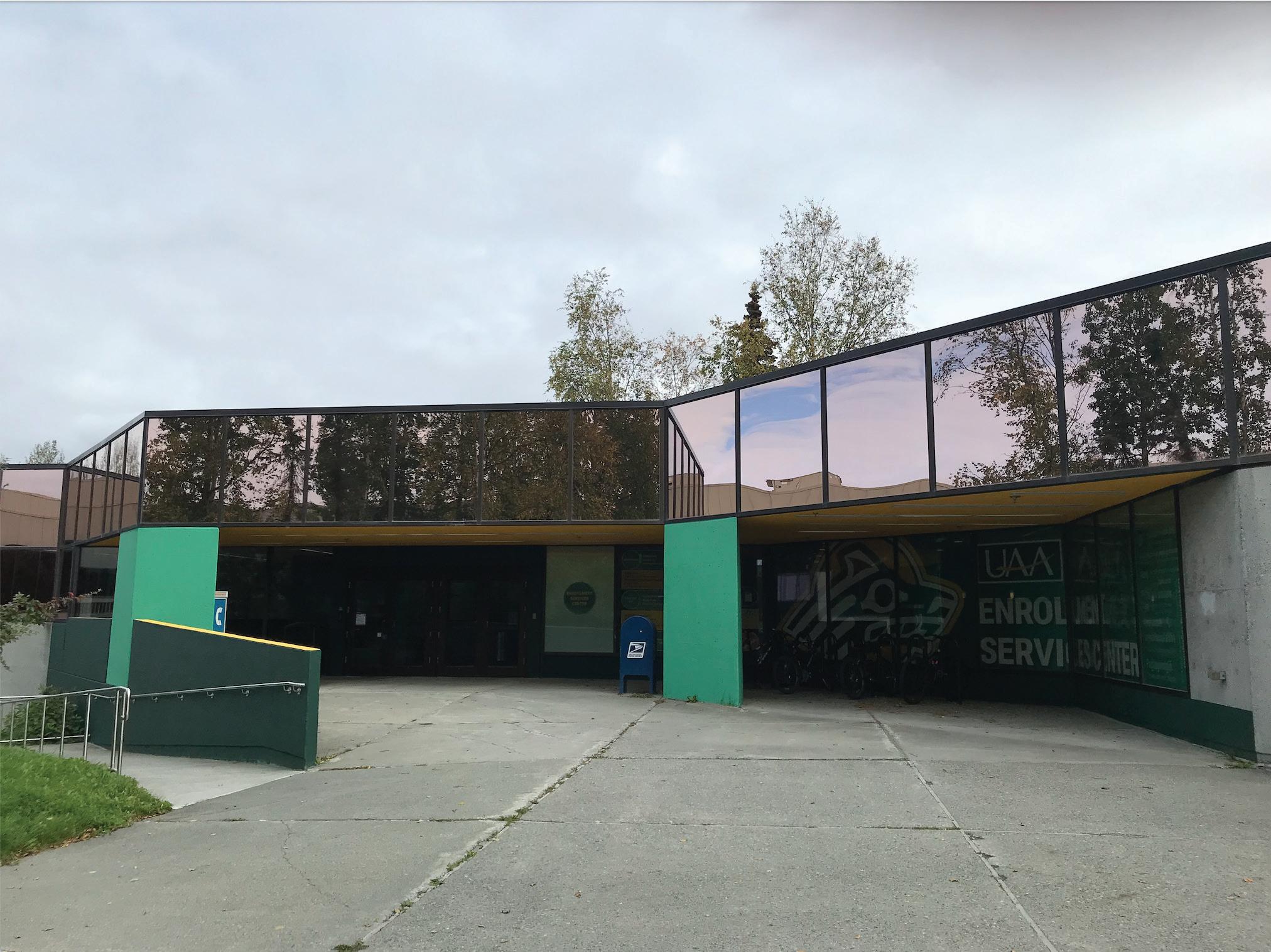
“Associate Vice Chancellor Laura Volden came in and mentioned how she would love to see more of a ‘welcome center’ vibe from our space,” said Moring.
Moring said that a warm welcome is also needed for new students and guests touring the Student Union.
“We wanted to make it welcoming to walk into the Student Union but also, our office gives tours frequently. This is the first place that we are having these students come to and we want them to feel welcome and feel that they have a place here” said Moring.
Moring said that enrollment services tours had around 492 students and guests for standard and enhanced visits and 482 group visits consisting of highschoolers and middle schoolers from around Alaska over the summer.
With this amount of UAA visitors, a vibrant entrance effectively welcomes current, future or former students.
The Student Union originally had a dull gray concrete entrance that led into a bright and warm interior. Moring and other contributors “wanted to make it very light and welcoming. I’m just excited that it achieved the goal.”
Moring said the overall response from students and staff is very good and many people enjoy the new addition.
Moring said the ceiling is painted yellow to keep the entrance looking new for longer as yellow paint typically gets dirty faster from weathering than darker colors, like green. Meanwhile, the pillars are two different shades of green.
The idea of painting the Student Union entrance has been in conversation since around January of this year. While that would seem like a long time for a simple paint job, Morning explained why.
“It always can take a little longer because it doesn’t belong just to Enrollment Services, it doesn’t belong just to the Student Union, it belongs to the university as a whole. We have so many different departments, it’s a giant game of telephone. It did take a little while to get done but everyone was very supportive,” said Moring.
The painting of a building entrance may not seem like much of an improvement, but these small changes gradually better the campus.
“Doing all of these smaller updates as we can is really important for the overall picture,” said Moring.
The Seawolves host 16 home games this basketball season at the Alaska Airlines Center.
By Avery Williamson sports2@thenorthernlight.org
The Seawolves hit the court on October 28! Over the off-season, the team added nine new players to their roster.
Senior basketball player Tyson Gilbert said in an interview with The Northern Light that “I am very excited about our group this year.”
“I feel that we have a good core coming back from last year and we’ve added some great pieces from the transfer portal and have a great group of freshmen.”
This year’s schedule consists of 30 games – 16 home and 14 away. Here’s what’s in store:
Oct. 28 – Seawolf Alumni, home game
Nov. 3-4 – Cal Maritime, home game
Nov. 10 – Chaminade, away game
Nov. 11 – Hawaii Pacific, away game
Nov. 17-18 – UC Merced, home game
Nov. 24-25 – Adams State, home game
Nov. 30 – Montana State Billings, away game
Dec. 2 – Seattle Pacific, away game
Dec. 17 – Texas-Tyler, away game
Dec. 18 – Cal State San Bernardino, away game
Dec. 19 – Hawaii Pacific, away game
Jan. 6 – Alaska Fairbanks, away game
Jan. 11 – Central Washington, home game
Jan. 13 – Northwest Nazarene, home game
Jan. 18 – Western Washington, away game
Jan. 20 – Simon Fraser, away game
Jan. 25 – Western Oregon, home game
Jan. 27 – Saint Martin’s, home game
Feb. 3 – Alaska Fairbanks, home game
Feb. 8 – Northwest Nazarene, away game
Feb. 10 – Central Washington, away game
Feb. 15 – Simon Fraser, home game
Feb. 17 – Western Washing-

ton, home game
Feb. 22 – Saint martin’s, away game
Feb. 24 – Western Oregon, away game
Feb. 29 – Seattle Pacific, home game
March 2 – Montana State Billings, home game
The Great Northwest Athlet-
ic Conference Tournament kicks off on March 7 in Ellensburg, Washington. The top six teams in the conference will advance to the GNAC Tournament.
Last year, the Seawolves didn’t qualify for the tournament. Gilbert said that this year “there is a big sense of urgency” to get back on the court.
“We have five seniors and a
good amount of local guys, so it is very important to all of us to be successful this year and I believe that we have the pieces and coaching staff to do so.”
You can check out the times for the games at GoSeawolves. com. Don’t miss out on cheering for the men’s basketball team this season!
Results for the men’s and women’s races tracked closely to the Seawolf Showdown, which took place on Aug. 26 in Anchorage.
By Matthew Schmitz editor@thenorthernlight.org
UAA Athletes traveled to Fairbanks to compete against UAF in the Nanook Forest Clash on Sept. 9. Runners from the men’s placed first, second, third, fifth and sixth in the 8K, beating UAF with a score of 17-38.
The women’s team was bested by UAF 16-39 in the 6K course.
Team scores are calculated by adding up the placing of the top five runners, and the team with the lowest score wins.
Coach Ryan McWillimas was quoted on goseawolves.com as saying, “Really great to see
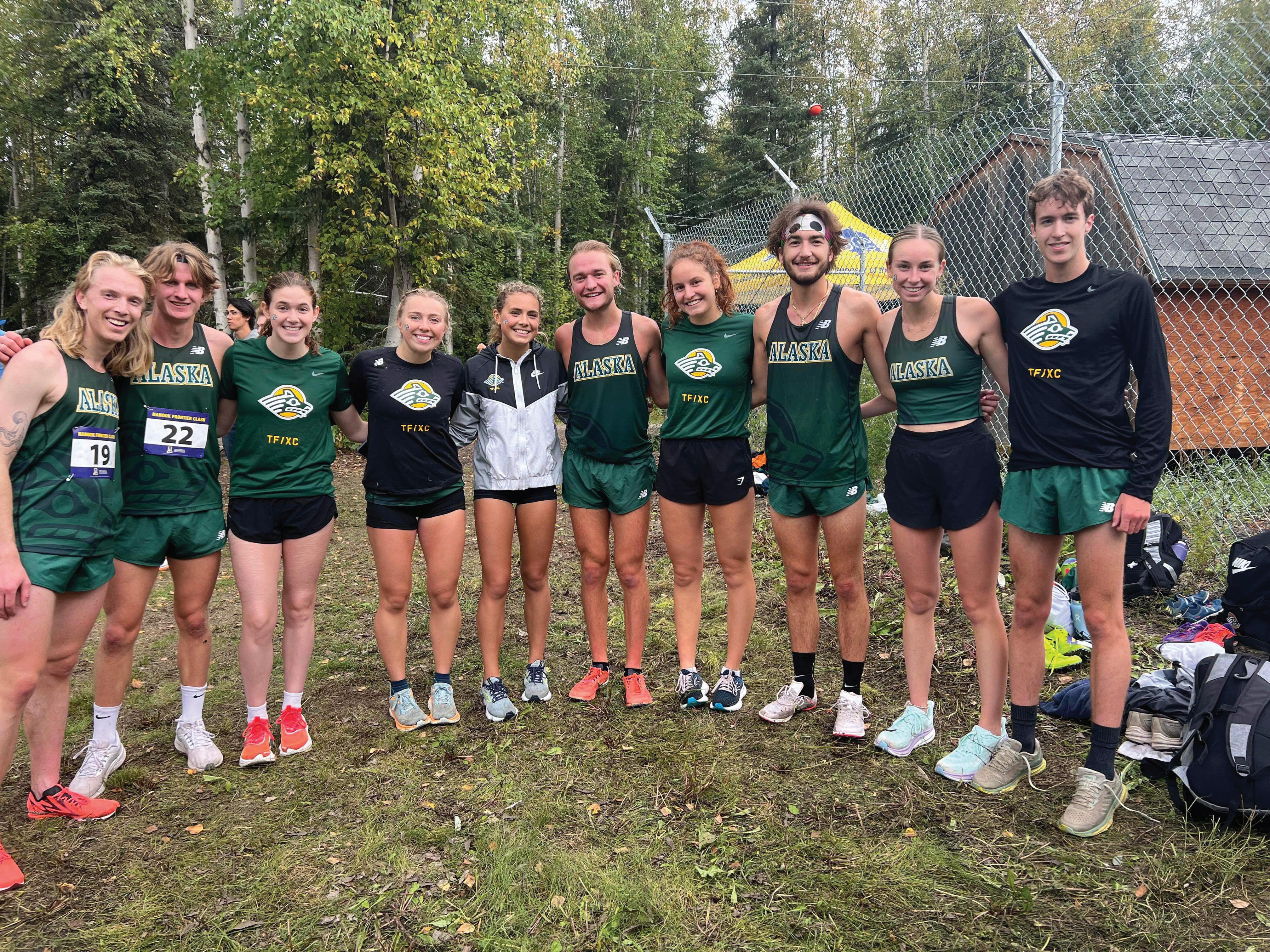
this crew out there racing hard against a good team on a really tough course after a tough week of training.”
John Peckham was the fastest Seawolf, completing the course in 25 minutes and 53 seconds. He came in nearly 36 seconds before the second place finisher, UAA’s George Payne.
In an email with The Northern Light, Peckham wrote, “The weather was perfect for racing. It was partly sunny and a great temperature…” He added that the course was dry and had almost no mud.
He described the Fairbanks course as “super brutal” with six major hill climbs.
His goal for the race, according to his email, was team oriented. He wrote that he was very happy with the team’s performance, even more so than with his own win.
Peckham wrote that the team started off slow and packed up at the beginning to work together and that he made a move about 3.5K into the course.
“I was feeling great and was really able to crank the last 4.5k fast.”
Peckham wrote that he didn’t really know how far he was ahead, but he was listening to the cheers of the crowd to get a sense of where the next runner was behind him.
Jordan Strausbaugh was the fastest UAA female, coming in fifth in the 6K race with a time of 24 minutes and 29.48 seconds.
The next fastest Seawolf was Sofija Spaic in seventh place.
Both athletes improved their standings from the Aug. 26 race against UAF, going from sixth to fifth and tenth to seventh respectively.
In an interview with The Northern Light, Strausbaugh said that it was the hardest race of the year but that she approached the race with a mindset of practice rather than one of competition because of the preceding week of hard training.
She said that her personal goal was to beat UAF’s Delainey Zock, but she did not achieve
that goal.
“Our coach [gave all of us] a girl to try to beat.”
She said that she had been given Zock, who had similar times to her’s last year.
Strasusburg said she is looking to beat Zock in future races. But, she said, the next races will be larger competitions with more schools.
“I’ll probably focus less on Fairbanks and more on my own race.”
The Seawolves will be traveling to Bellingham, Washington, for their next competition. They’ll compete in the Bill Roe Invitational on Sept. 23, hosted by Western Washington University.
Last year, both the men’s and women’s team placed sixth in the race. Cole Nash came in second for the men’s team and Elle Stevens 21st for the women’s. The Seawolf men’s last win was in 2015 and the women’s in 2016.
For information and updates about UAA cross-country, visit goseawolves.com.

The men’s team saw significant improvements over last year’s race in the Bill Roe Invitational.
By Matthew Schmitz editor@thenorthernlight.org
The Seawolf crosscountry team competed in the Bill Roe Invitational on Saturday, hosted by Western Washington University. UAA’s Cole Nash won the men’s race, remaining undefeated this season.
The race was held in Bellingham, Washington, and both the men’s and women’s courses consisted of a loop around Lake Padden.
UAA cross-country runner Nell Baker spoke with The Northern Light in an interview. She said the course started on a grass field and began with a tight 1K loop, then went on to loop around the lake. She described the section around the lake as packed dirt and gravel.
The men’s course followed the same path, but had more tight loops to add length.
Baker said the course was unique because the roughly 2 1/2 mile section that circled around the lake didn’t have any spectators. She said there were some rolling hills on the back end of the lake, so it wasn’t a very fast course.
“It’s not as hilly as the courses we have run here in Anchorage or in Fairbanks, but it is definitely a [more hilly] course for what you see in collegiate courses, I would say.”
The women ran their race first. Baker said the
weather was overcast and a little chilly, and she said it started to rain and blow a little when the men’s race started.
Overall, the men’s team came in second with 62 points, and Western Washington won with 47 points.
To score the teams, the top five runners are assigned points based on their standing — first gets one point, second gets two points, etc. — and after the points are added up, the team with the lowest score wins.
Nash completed the men’s 8K course in 24:41.
John Peckham came in eighth with a time of 25:09, and Michael Zapherson finished in ninth place with a time of 25:10.
Both Nash and Zapherson saw improvement over last year, with Nash going from second to first and Zapherson going from 27th to ninth.
The men’s team overall moved up from sixth place last year to second place this year.
Nash spoke with The Northern Light about his performance in the race. He said that he had a hard fall in the beginning but that he quickly recovered to the front of the pack.
He said that he pulled ahead and led for most of the race after that.
“It ended up being more of a relaxed race until about two miles when we got to the lap around the lake and then I kind of just
took the lead and started pressing from there.”
Nash said that Sebastian Brinkman – competing for Simon Fraiser –passed him with about a mile to go, but Nash was able to retake the lead with about 400 meters to go.
Nash said that he’s raced Brinkman before and that he could outpace Brinkman in the last stretch.
“He’s a [talented runner] but he doesn’t really ever have much of a sprint in him at the end, so I was just kind of waiting for that last 400.”
Nash is looking forward to having the home field advantage in October when athletes come to Anchorage to compete in the GNAC Championship.
“The one race that really matters is conference championship. I think having that here in Anchorage is huge … Most teams haven’t ever run a course as hard as the one we’ll run at Kincaid. So I think that will be the main difference maker for us.”
The women’s team came in seventh place overall.
Baker was the fastest seawolf and earned 10th place with a time of 22:07 for the women’s 6K course. Jordan Strausbaugh came in 35th with a time of 23:18, and Avery Williamson came in 54th at 24:06.
Baker said the women’s race started bunched up but spread out quickly.
She said it’s important to position yourself well in the first mile so you can move up later on.
“That first mile is usually quite a bit faster than the pace of the rest of the course, so it’s kind of just feeling confident knowing this first mile is going to be really hot, but I don’t have to hold that pace the whole time.”
She said the team was coming off some hard training and the goal of the race was to get a sense of where they stood in relation to the other runners in the conference.
“This meet was just to race some of the other women in the conference and see where they’re at and where I’m at. And … if that was the goal — of just running with those women and making sure when conference championship comes I can run with them — then we definitely achieved that goal.”
She said she came away with a good sense of what she needs to do to be successful in the conference championship.
“Overall I’m really happy with the performance.”
In an interview associate head coach Chas Davis told The Northern Light that both teams have had their best performance since 2019.
“... We’ve got a team on the men’s side that can [legitimately] challenge for a conference championship and legitimately challenge

for a national championship qualification …we haven’t had a team that could do anything like that in four years.”
He said: “It was a very nice monkey off the back for [Nash] to go out and win that as smooth as he did and as well as he did. It took a lot of pressure off of him. Even with the rest of the men too … there was a lot of nervousness for everyone, so it was really nice to kinda get that nervousness out … Especially the way that [Peckman] and [Zapherson] raced … they ran very well, they are in a very good place.”
He said the women’s team also did well and they individually beat some women they’ve never beat before.
He said that Baker, who came from Idaho University where she got her un-
dergraduate degree, hasn’t run in two years, so it was good for her to see that she could still perform.
“It was really cool to see her in her first real cross-country race in two years and see her finish top 10.”
He also said that Williamson has made dramatic improvement in the sport.
“She was more of a sprinter and hurdler [in high school]. She ran cross country, but her performance [was] not indicative of where she is now.”
The next cross-country race will be in Romeoville, Illinois, on October 7.
The GNAC Championship will be coming to Anchorage on Oct. 21. You can find more information and updates on goseawolves.com.
This story is part of a series about how, historically, sports teams are triumphant after a tragedy in their town. This story explores the Golden Knights and the 2017 Las Vegas shooting.
By Avery Williamson sports2@thenorthernlight.org
On Oct. 1, 2017 approximately 22,000 people attended the Route 91 Harvest country music festival in Paradise, Nevada. However, the festival was brought to an abrupt end as Stephen Paddock opened fire on the crowd.
Paddock fired over 1,000 bullets from his 32nd-floor room in the Mandalay Bay hotel. He killed 58 people and wounded over 700.
Police rushed to arrest Paddock, but when they entered his suite he was found dead from a self-inflicted gunshot wound.
Since Paddock couldn’t be interrogated, the motive for the mass shooting is undetermined.
As people mourned the loss of loved ones, a National Hockey League expansion team – the Golden Knights – was introduced to Las Vegas.
Having no connection to this new NHL team, Nevada clung onto the hope that the Golden Knights would give them a reason to celebrate. And the team did not disappoint.
On Oct. 10, the Golden Knights played their first game in Las Vegas. Defenseman Derek Engelland gave a 58 second speech –one second for each victim – before the game.
According to the Review Journal, the speech was “a stirring tribute delivered with the names of the victims emblazoned on the ice and each Knights player having escorted a first responder onto the rink, those from police and fire and medical and other emergency services recognized for their heroism in the aftermath of the shootings.”
Following this touching pregame ceremony, the Golden Knights won their first home game of the season and became the first NHL expansion
team to win three straight games.
From this point forward, the Golden Knights were no longer just a new team – they were Las Vegas’ pride and joy.
The team ended the season with an impressive 51-24-7 record, handily winning the Pacific Division.
With their strong record, the Golden Knights advanced to the 2018 Stanley Cup playoffs and took on the Los Angeles Kings in the first round. Vegas won 4-0.
Their next opponents – the San Jose Sharks –pushed the series to six games, but the Golden Knights were still able to win 4-2 and advance to the Western Conference Finals.
Here, Vegas took on the Winnipeg Jets. After losing the first game 0-1, it didn’t look good for the Golden Knights. But the team was able to rally together and win the next
four games to advance to the Stanley Cup Finals.
The perfect ending for Vegas’ inspirational season would have been the Stanley Cup, but the Golden Knights fell short of this accomplishment. They were defeated by the Washington Capitals in game five of the series.
Their season was nothing short of a success, though. The team made NHL history by making it to the Stanley Cup their first year –– something only one other team, the Florida Panthers in 2023, has ever done.
More importantly though, the Golden Knights also helped Las Vegas heal from a tragedy.
To this day, the 2017 Las Vegas shooting is the deadliest mass shooting by a single shooter in American history. It left many people scared, mournful and hopeless. But the Golden Knights helped to turn this around.
While the team didn’t

end the season the way they wanted to, their achievement was remarkable.
In an interview with the Review Journal, Vegas Golden Knights coach Gerald Gallant said, “we always go back to our first home game.”
“It wasn’t about our team winning, it wasn’t about nothing — it was about the first responders and the tragedy that happened the week before. It was a tough way to start our season, but I think the guys and everybody sup -
ported it well. They all came out and played an unbelievable game that first night and I just think it carried over [to the rest of the season].”
In just a few months, the Golden Knights transitioned from the newest NHL team to Nevada’s favorite team.
As Brad Creel – a longtime Las Vegas resident and huge hockey fan – told The New York Times, “the team wrapped themselves around the town, and the town wrapped themselves around the team.”
With data from a tracking collar, author Tom Walker writes of the travels through the Arctic by a lone wolf looking for a mate, sustenance and survival
By Kaycee Davis features2@thenorthernlight.org
Walker, Tom “The Wanderer: An Alaska Wolf’s Final Journey.” Mountaineers Books, 2023 176 pages, 1680516132 $18.95 paperback 978-1680516135
I chose to review “The Wanderer: An Alaska Wolf’s Final Journey,” by Tom Walker, because of its cover. The photo of the wolf walking in what appeared to be a blizzard appealed to me because it was getting hot outside and I already longed for cool weather.
The book is a modern adventure that took me around Alaska. It gave me a glimpse into an entire ecosystem while sharing the details of a collared wolf who is numbered 258.
In his introduction, Walker introduces readers to the terrain and history of the Yukon-Charley Rivers area, describing the
3211 Providence Drive Student Union 113 Anchorage, AK 99508
Executive Editor
Matthew Schmitz (907) 786-1313 editor@thenorthernlight.org
News Editor Taylor Heckart news3@thenorthernlight.org
Sports Editor Avery Williamson sports2@thenorthernlight.org
Multimedia Editor Jay Witworth multimedia1@thenorthernlight.org
Layout Editor
Linnaea Gossard layout@thenorthernlight.org
Copy Editor
Kyle Ivacic news2@thenorthernlight.org
Reporter
Kaycee Davis features2@thenorthernlight.org
Reporter Hannah Dillon opinion2@thenorthernlight.org
Audio Reporter
Mark Zimmerman news4@thenorthernlight.org
Graphic Designer Tressa Wood graphics@thenorthernlight.org
Yukon River and its tributaries: “mountain ramparts that scribe the horizons” and “the ancient, dry cold steppe.”
He writes that it was here a plethora of large animals — including wooly mammoths, rhinos, bison, lions and musk ox — once reigned and that some of their descendents still live there.
This introduction sets the reader up for realizing that the history of the area is older than human records and that the wolf whose life we will witness is but a part of a longer story. Throughout the book, he shares more of this historical past as it becomes pertinent to the bigger picture.
The first chapter begins with describing how wolves are spotted in the air by a biologist, collared, released and monitored. In the book, Wolf 227, a female, is spotted running with a wolf that they want to dart and collar, which they do. Wolf 258 — often referred to as “The Wanderer” — becomes the star of the
book.
The biologist catches up with 227 later that afternoon, and replaces her failing collar. We learn how the pair of wolves meet up again a few days later and where they go. The biologists and pilots follow them from the air to learn about their lives.
Walker does a great job explaining the place and the flora and fauna as his story flows.
For instance, instead of saying that on June 13 The Wanderer entered the Arctic National Wildlife Refuge and found little to eat except bird nests and small rodents, he paints a bigger picture. He notes that it isn’t quite summer here yet because “spring had hardly begun.”
He describes the vigorous plant life and landscape: “[the] blackish oxytrope and purple mountain saxifrage, the first in a sequence of blooming Arctic plants, grew in low, dense mats that absorb and hold in warmth.”
As The Wanderer moved
deeper, there were less caribou. The wolf was seeing others enter the habitat to feed, along with “millions of birds.”
Because of the description, one can imagine what it looks like with all the birds nesting in the tundra, “pocketed with countless ponds and lakes.” He explains how such a wet place might contradict the lack of precipitation in the region.
“[It is] a dry desert with fewer than five inches of precipitation, yet it has widespread standing water due to permafrost terrain.”
Throughout the book, he touches on details of different indigenous groups that have lived in the regions and their beliefs.
At one point he describes a dance, The Wolf Dance, which is “part of a revival of Kivgiq, the Messenger Feast” that “tells a traditional story of swallows turning into wolves.”
As I read the book, I was frequently looking up photos of
animals, insects, plants and geographical details on my phone.
I was impressed to see that “The Wanderer” has elements of being a braided narrative where Walker continually wove in Alaska history, ecology, human interaction, and the wolf’s journey, with each chapter sharing details to give what feels like a new kind of 3-D feel that conveys time and the surrounding events.
I enjoyed “The Wanderer” because of the amount of information in this book. If you flip to any random page, you’ll find some cool factoid about Alaska, or learn about the geography, Arctic animals, or Indigenous people who have lived in the region for generations. Wolf 258 is the star of the book, but the story is about the wolf in his environment.
In a Youtube video with the same title as his book, you can hear Walker talk about his work.
Web Manager Selena Im webmanager@thenorthernlight.org
Photographer Justin Cox photographer@thenorthernlight.org
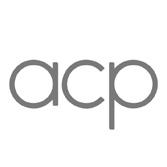
The Northern Light is a proud member of the Associated Collegiate Press. The Northern Light is a weekly UAA publication funded by student fees and advertising sales. The editors and writers of The Northern Light are solely responsible for its contents. Circulation is 2,500. The University of Alaska Anchorage provides equal education and employment opportunities for all, regardless of race, color, religion, national origin, age, sex, Vietnam-era or disabled-veteran status, physical or mental disability, changes in marital status, pregnancy or parenthood. The views expressed in the opinion section do not necessarily reflect the views of UAA or the Northern Light.
The University of Alaska is an affirmative action/equal opportunity employer and educational institution. The University of Alaska does not discriminate on the basis of race, religion, color, national origin, citizenship, age, sex, physical or mental disability, status as a protected veteran, marital status, changes in marital status, pregnancy, childbirth or related medical conditions, parenthood, sexual orientation, gender identity, political affiliation or belief, genetic information, or other legally protected status. The University’s commitment to nondiscrimination, including against sex discrimination, applies to students, employees, and applicants for admission and employment. Contact information, applicable laws, and complaint procedures are included on UA’s statement of nondiscrimination available at www.alaska. edu/nondiscrimination.
The Northern Light encourages readers to express their views in the newspaper. The Northern Light reserves the right to reject or publish any submission, online or in print.
Letters to the editor can be submitted to editor@thenorthernlight.org. The maximum length for a letter to the editor is 250 words, and 150 words for letters specifically endorsing candidates for federal, local, or university office. A letter to the editor is written by someone who does not have authoritative knowledge on the subject they are discussing. Contributors are restricted to one published letter to the editor per month.
Media Adviser Paola Banchero
Administrative Adviser Zac Clark
Fiscal Technician Micah Perino
The Northern Light is hiring! See our job listings at careers.alaska.edu.
Opinion pieces can be submitted to editor@thenorthernlight.org. The maximum length for a contributor’s opinion piece is 450 words. Contributors are restricted to one published opinion piece per month. Opinion pieces written by staff of The Northern Light are limited to 800 words. An opinion piece that is published in The Northern Light should be written by someone who has authoritative knowledge on the subject they are discussing.
Letters and opinion pieces are subject to editing for grammar, accuracy, length and clarity. All letters and opinion pieces must include names, major and/or group affiliation and contact information for verification purposes. The Northern Light will not publish anonymous letters or pseudonyms. Requests for corrections can be sent to editor@thenorthernlight.org. Print publication is subject to accuracy and available space. All corrections are posted online with the original story at www. thenorthernlight.org. The deadline for submissions is the Friday before publication at noon, no exceptions. The Northern Light newsroom is located on the first floor of the Student Union Room 118.
